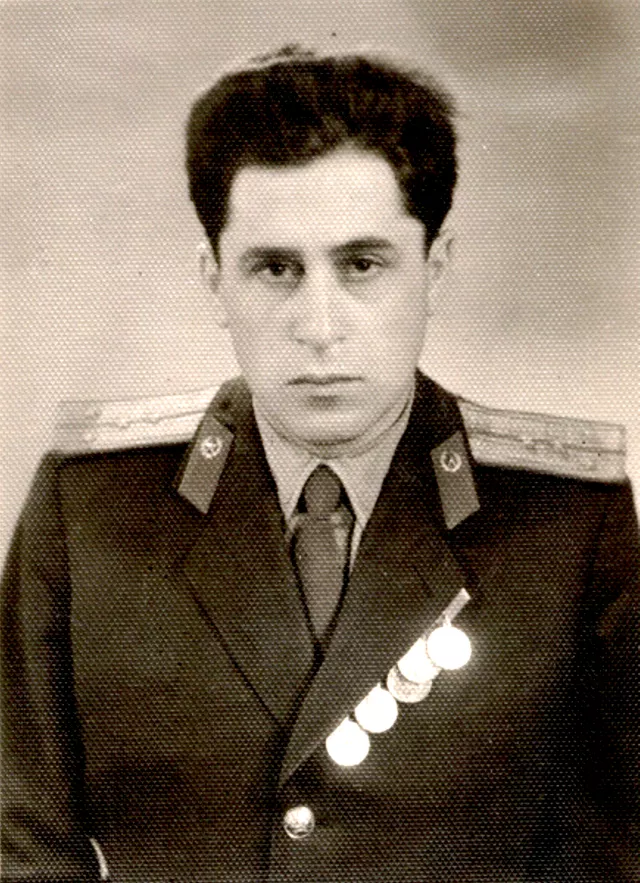Henrich Kurizkes
This is me during my service in Tikhvin. This photo was taken in 1951.
After the war I was waiting for demobilization. I didn't contemplate my future being with the army. I wanted to enter the Law Faculty at the University and become a lawyer. Our Corps relocated to Estonia and we were deployed in the military quarters in Kloog. However, there were no lodgings for our battalion so we started building houses. We made the frame structure from pine and fur tree trunks, and constructed the walls from wooden lath. Later we relocated to Algvida, in the opposite direction from Tallinn, in the direction of Leningrad. We were staying in the woods, 7 kilometers from the station. We had to make earth huts to stay in.
Demobilization started for older people. I was an officer. I was told I was still young and had to serve in the army. I served in the Estonian Corps until 1949, when reorganization of the army began and the staff was to be reduced. This was also the start of the anti-Semitic campaign in the USSR: the process against cosmopolitans, and the murder of Mikhoels. After that reprisals in Estonia began. To tell the truth, when this happened there was more mention of the agricultural population. In the villages, the process of dispossession of wealthy farmers, the Kulaks began. Of course, there were wealthier and poorer farmers in Estonia. Agriculture was well developed there; Estonia prospered from the export of butter, eggs and bacon. Denmark purchased butter and bacon was sold to England. Farming is hard work and all members of a farmer's family joined in this hard work. The Soviet power expropriated land from these people and granted it to the poor; rich country families were banished to Siberia.
In 1950 I was employed as a financier in the military enlistment office in Tikhvin, in the St Petersburg region [200 km from St Petersburg]. I got married in the some year. I met my wife Miriam Patova when I was on service near Tallinn. We met at a Russian folk brass orchestra concert in the concert hall of Tallinn. A common acquaintance introduced me to Miriam. Miriam was studying at school when I started seeing her. After finishing school Miriam went to Leningrad where she entered the Therapeutic Faculty of the Medical College. We corresponded and saw each other when she came home during vacations.
We got married during her winter vacation in 1950. Miriam's mother was severely ill at the time, and we had no wedding party. We registered our marriage and had a simple dinner with our parents in the evening. Only a year later, when Miriam came to Tallinn on winter vacation and I also had a short-term vacation we arranged a wedding party and invited our relatives. I visited Miriam in Leningrad. It was no problem for me to travel from Tikhvin on weekends.
Our daughter Tatiana was born in Leningrad on 9th January 1951. Miriam was a 4th-year student then. The day before the birth Miriam attended her lectures in college. Before our daughter turned one month old, Miriam brought her to Tallinn, stayed at home for a short time and returned to Leningrad. Miriam's mother took care of our daughter till Miriam graduated from college. My wife and I visited our daughter in Tallinn whenever we got a chance.





















